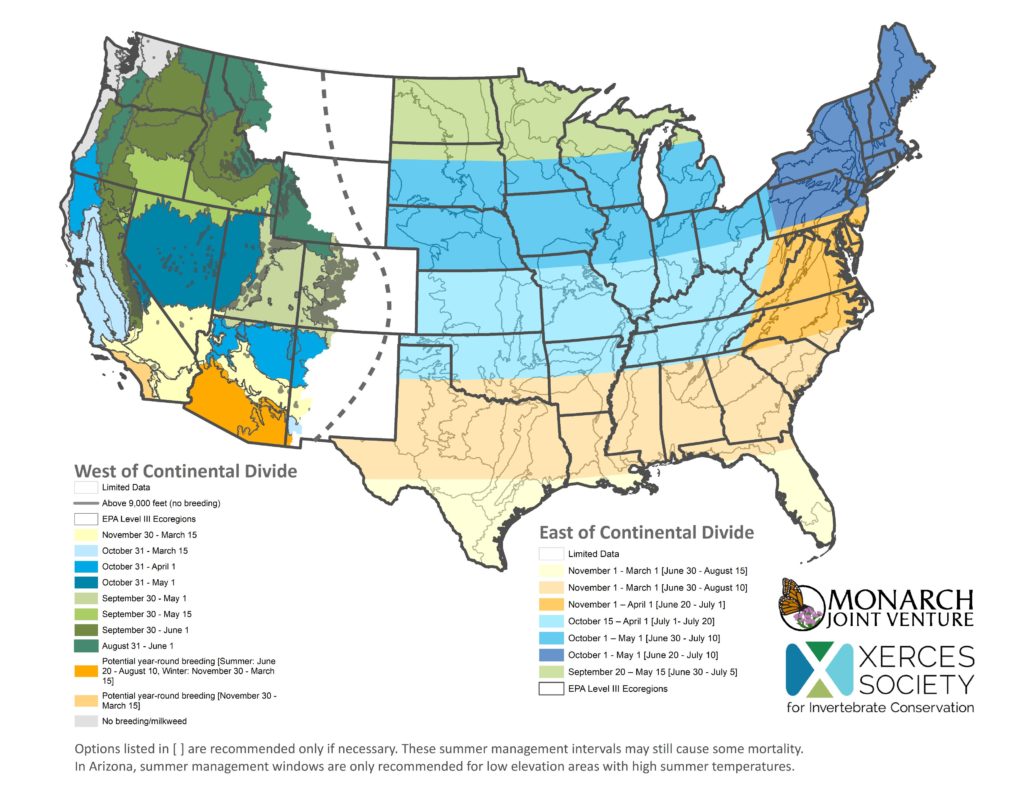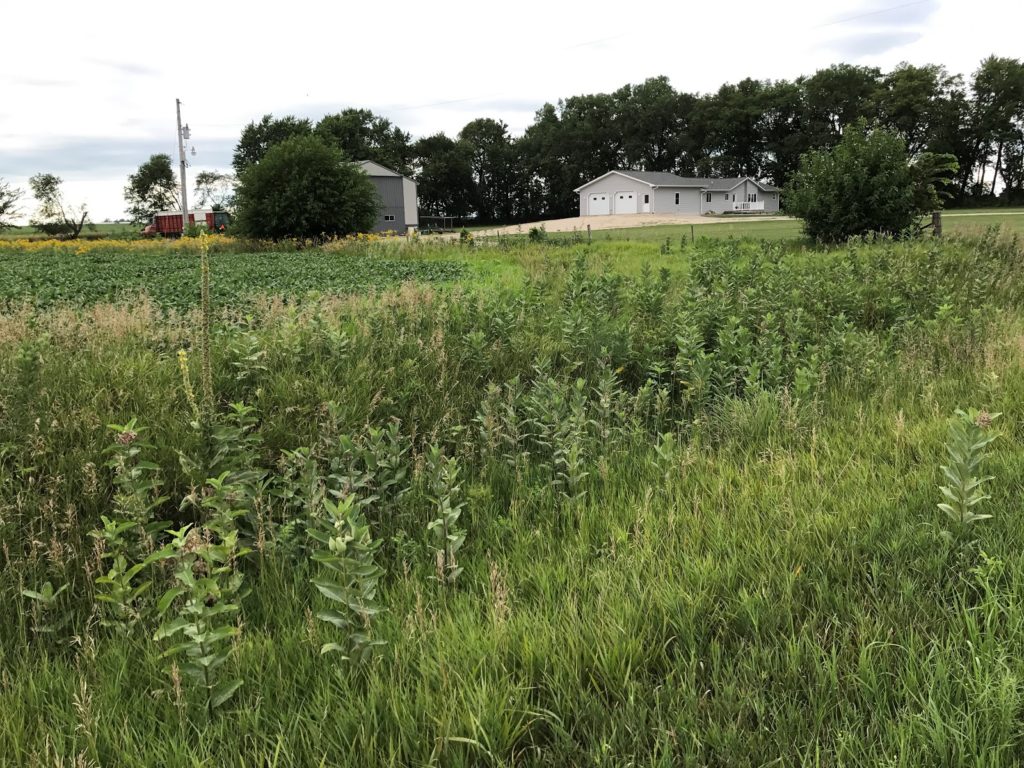Among the most simple and effective measures farmers and landowners can take to conserve monarch butterfly populations is to follow best practices for mowing. When establishing habitat, or conducting management activities to keep the site healthy, mowing can be an important tool. Once habitat is well-established, mowing or prescribe burning every 3-5 years promotes healthy plant diversity; mowing or prescribe burning too frequently can be detrimental to both the plants and wildlife using the site, including monarchs. When mowing is necessary, avoid peak monarch activity to minimize direct impacts to the monarch larvae growing on the milkweed plants. Visually inspect for any monarch activity, like eggs, caterpillars, or frass (caterpillar droppings) and take appropriate measures to protect ones you observe. However, there are more factors to consider when incorporating best practices for mowing your land.
- Milkweed is the only plant on which monarch caterpillars feed. If mowing is required, limiting it to only targeted areas (for example, weedy areas) and not mowing an entire habitat will ensure that some areas are left for caterpillars to feed and grow.
- Understanding the breeding and migration cycles of monarchs can help give a timeframe to mow. The Monarch Joint Venture provides maps for recommended management timing as well as monarch migration here.

- Use a minimum cutting height of 8-12 inches to minimize impact on native plants and removes seed production of weedy plants.
- Protect other wildlife, like deer and nesting birds by mowing at reduced speeds and using a flushing bar to allow wildlife to escape while mowing.
- Finally, step back and analyze whether these areas you have been mowing are a necessary expense of your time and equipment. They may be the few areas left to support vibrant and much necessary monarch habitat. A manicured area is a desert in the eyes of a monarch.
- Find new places on your farm for monarchs, other pollinators, and wildlife to thrive by converting idle areas to prairie or pollinator habitat.

By implementing these simple best practices, landowners can have a significant impact in conserving pollinator habitat and supporting monarch populations. See the graphic below for suggested areas of a farm that could be good options to leave in a more natural setting and enable monarchs and other pollinators and beneficial insects to forage.

